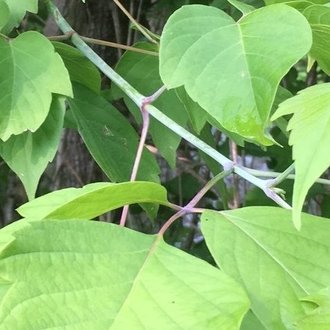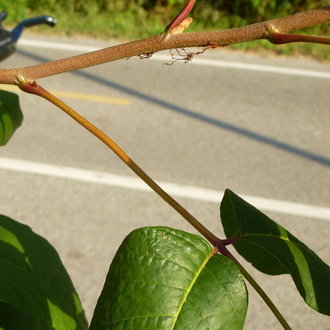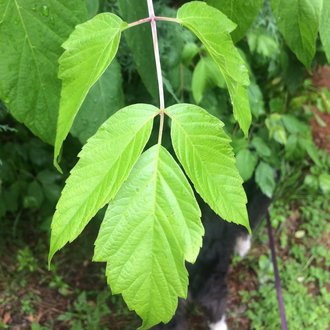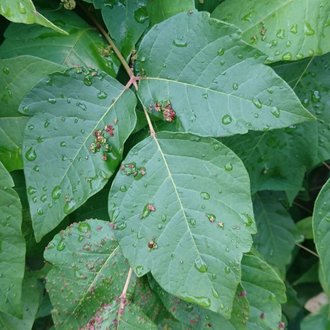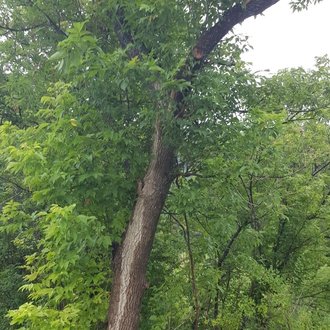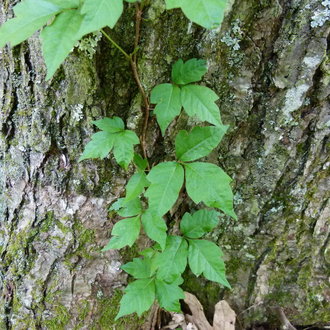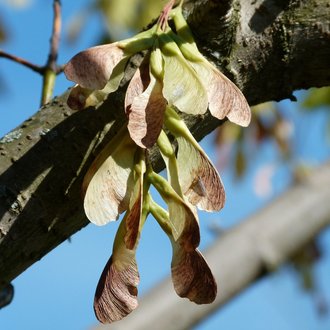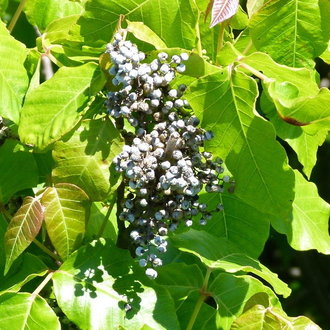Box Elder vs Eastern Poison Ivy
These plants, not closely related, are often confused when young because they can both have three leaflets with the middle leaflet on a longer stalk, but they are easily distinguished by leaf arrangement, growth habit, and other characteristics.
Box Elder (Acer negundo) | Eastern Poison Ivy (Toxicodendron radicans) |
A maple with compound leaves, native across North America, coast-to-coast, common in riparian areas and near wetlands. | A perennial woody vine that can cause an unpleasant and dangerous allergic reaction following contact with its sap. Widespread and abundant in much of its range, and highly variable in appearance. |
Leaves (sets of leaflets) and branches have an opposite arrangement on the stem. Stem color is variable and may be reddish, but often waxy blue-white. Photo © Emily Rollinson, Public Domain. | Leaves and branches have an alternate arrangement on the stem. Stem color variable, but more likely brown or reddish, and never waxy blue-white. Aerial rootlets often visible on stem. Photo © Ira Gershenhorn, Public Domain. |
Number of leaflets variable. Although 3 leaflets is common, seedlings may have simple leaves, mature trees commonly have 5-7 leaflets. Photo © zoedavis (iNaturalist), Public Domain. | Nearly always has 3 leaflets. Photo © Shawn Treelife, Public Domain. |
Free-standing and can grow into a sizeable tree. Photo © Charlie Hohn, CC BY 4.0. | Vine climbing by aerial rootlets; only grows a few feet tall without support. Photo © botanygirl (iNaturalist), CC BY 4.0. |
Fruit a samara like other maples, borne in pairs. Photo © botanygirl (iNaturalist), CC BY 4.0. | Fruit a berry, borne in large clusters, waxy and whitish when ripe. Photo © botanygirl (iNaturalist), CC BY 4.0. |
References & External Resources
These short lists show only links helpful for ID. For a complete list of references and resources also covering other aspects of ecology, visit the links section of the full article on each plant, which is the first entry here.



